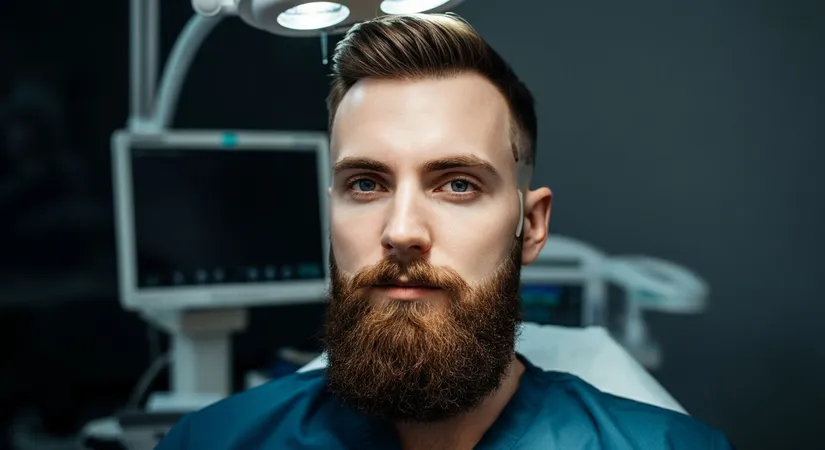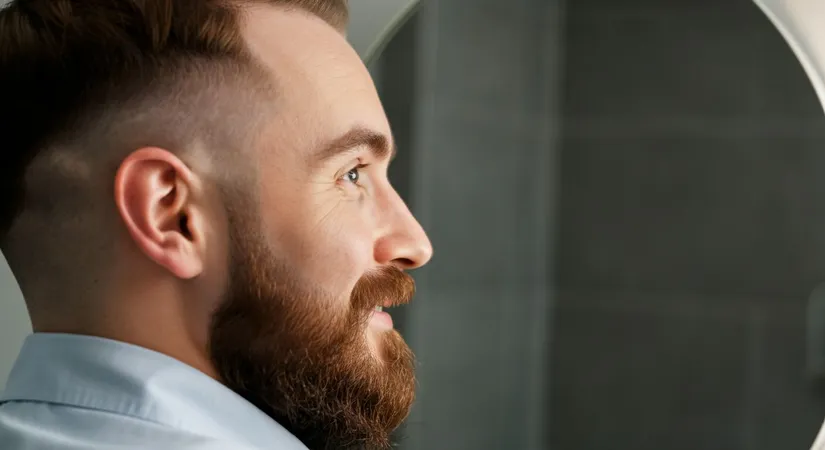Facial Hair Restoration: Transform Your Look
Revitalize your look with a facial hair transplant at leading clinics like estethica, where advanced techniques meet personalized care.
Facial hair, symbolizing masculinity and style, has gained significant attention in recent years. For individuals struggling with patchy or nonexistent facial hair, a beard and mustache transplant offers an innovative solution to achieve the ideal look. This cutting-edge procedure not only enhances your appearance but also boosts confidence. In this comprehensive guide, we'll explore everything from understanding the procedure to choosing the perfect clinic, ensuring you make well-informed decisions about facial hair surgery. Dive into the world of facial hair restoration and transform your look with this ultimate guide.
Understanding Beard and Mustache Transplants
The Art of Facial Hair Restoration
Beard and mustache transplants are intricate procedures designed to restore facial hair density. These surgeries are often sought by individuals experiencing hair loss due to genetics, hormonal imbalances, or physical trauma. Utilizing advanced techniques like Follicular Unit Extraction (FUE) and Direct Hair Implantation (DHI), surgeons meticulously graft hair follicles to achieve a natural look. For instance, a man who lost his beard in an accident can regain his facial hair through these methods, enhancing his confidence and appearance.
Key Benefits of Beard and Mustache Transplants
- Permanent solution to facial hair loss, ensuring long-lasting results.
- Natural appearance due to precise follicle placement and growth patterns.
- Boosts self-esteem and personal image, especially for those with patchy or thin facial hair.
These benefits make facial hair restoration a popular choice among men seeking to enhance their facial aesthetics. For example, a young professional with sparse facial hair may opt for a transplant to achieve a fuller beard, aligning with his desired style.
Beard Transplant Procedure Steps
- Consultation and assessment to determine the best approach for the individual.
- Extraction of hair follicles from a donor area, typically the back of the scalp.
- Implantation of follicles into the beard or mustache area, ensuring natural alignment.
Each step is crucial for the success of the transplant, with the final outcome being a fuller, more natural-looking beard or mustache. For example, a man with a genetic predisposition to sparse facial hair can undergo this procedure to achieve a more robust and even beard.

How Facial Hair Surgery Works
The Science Behind Facial Hair Restoration
Facial hair restoration involves a meticulous process where healthy hair follicles are harvested from a donor site, usually the back of the scalp. These follicles are then strategically implanted into the facial area, ensuring a natural growth pattern and appearance. This procedure is not only about technical skill but also requires an artistic touch to achieve a seamless blend with existing facial hair.
Factors Influencing Beard Transplant Outcomes
- Quality of donor hair, which affects the natural look of the transplant.
- Surgeon's expertise in follicle placement and density management.
- Patient's skin type and healing ability, influencing recovery and results.
These factors are crucial in determining the success of a beard transplant. For instance, a patient with coarse hair might achieve a more natural look compared to someone with finer hair, due to the texture matching the facial hair.
- Initial consultation to assess hair type and desired outcome.
- Extraction of donor follicles using advanced techniques like FUE.
- Careful implantation into the beard area, ensuring natural alignment.
Each step is vital for achieving a successful outcome, with the final result being a fuller, more natural-looking beard. For example, a man with patchy facial hair can undergo this procedure to achieve a consistent and even beard appearance.

Beard Transplant Recovery Tips
Optimizing Post-Surgery Healing
After undergoing a beard and mustache transplant, the recovery phase is crucial for achieving optimal results. Patients should focus on gentle care and protection of the transplanted area to ensure successful healing and hair growth. For instance, avoiding direct sunlight and strenuous activities can prevent irritation and promote recovery.
Essential Aftercare Practices
- Use a mild cleanser to gently wash the face, avoiding harsh scrubbing.
- Apply a recommended moisturizer to keep the skin hydrated and support healing.
- Follow the surgeon's specific aftercare instructions for optimal results.
These practices help maintain the health of the transplanted follicles, ensuring they integrate well with existing facial hair. For example, a patient who diligently follows these steps is more likely to experience a smooth recovery and enhanced hair growth.
- Initial days: Focus on rest and minimal facial movement to aid healing.
- First week: Begin gentle cleansing and moisturizing as advised by the surgeon.
- Following weeks: Gradually resume normal activities while avoiding direct sun exposure.
By adhering to these steps, patients can facilitate a successful recovery, leading to a fuller and more natural-looking beard. For instance, someone who carefully manages their recovery period can expect to see noticeable improvements in hair density and texture over time.

Choosing the Best Clinic for Your Needs
Evaluating Clinic Expertise and Technology
When selecting a clinic for a beard and mustache transplant, it's essential to consider the expertise of the professionals and the technology they use. Clinics like estethica, renowned for their advanced techniques and personalized care, exemplify the standards you should seek. For instance, a clinic that employs the latest Follicular Unit Extraction (FUE) technology can offer more precise and natural-looking results.
Factors to Consider When Choosing a Clinic
- Reputation and reviews from previous patients, indicating the clinic's success rate and patient satisfaction.
- Availability of personalized treatment plans tailored to individual needs and facial hair goals.
- Experience and qualifications of the surgical team, ensuring skilled and safe procedures.
These factors are crucial in ensuring a successful facial hair restoration experience. For example, a clinic with a high patient satisfaction rate and experienced surgeons can provide peace of mind and confidence in the procedure's outcome.
- Research clinics with a strong track record in facial hair restoration.
- Schedule consultations to discuss your specific needs and expectations.
- Evaluate the clinic's technology and the expertise of its medical team.
By following these steps, you can make an informed decision and choose the best clinic for your beard and mustache transplant needs. For instance, a thorough evaluation of clinic options can lead to selecting a facility that aligns with your aesthetic goals and ensures a successful outcome.
Advanced Follicular Unit Extraction Techniques
Excellence in Beard Transplant Recovery and Results
Frequently Asked Questions
What is a beard and mustache transplant?
How does facial hair restoration work?
What are the key benefits of a beard transplant?
What should I consider when choosing the best clinic for a mustache transplant?
What are the essential aftercare practices following a beard transplant?
Discover the path to 'Healthy Beauty' with estethica's expert care. Call now for your free consultation and take the first step towards a more confident you!
📞 Call for Your Free Consultation